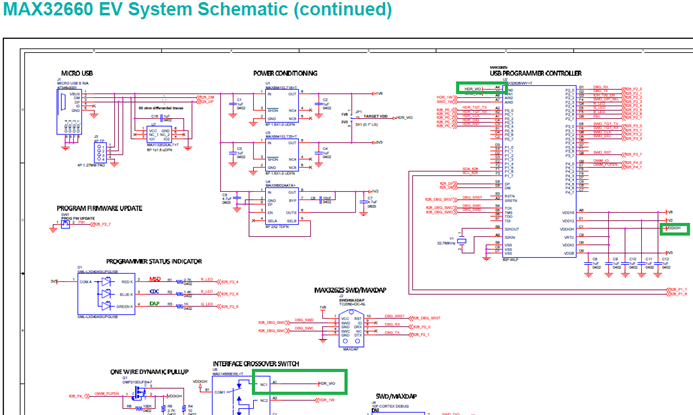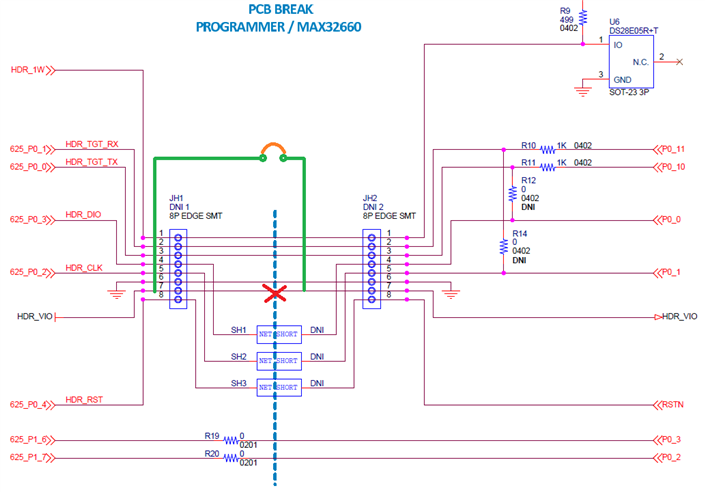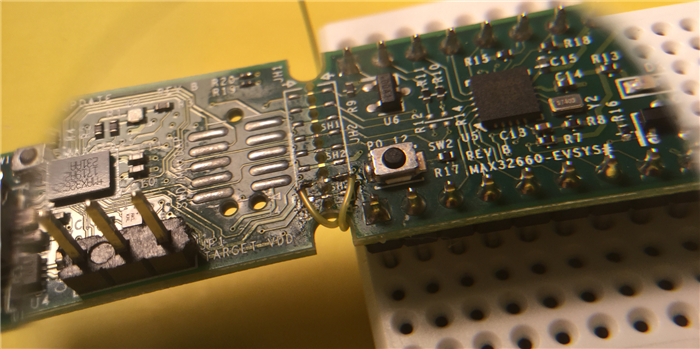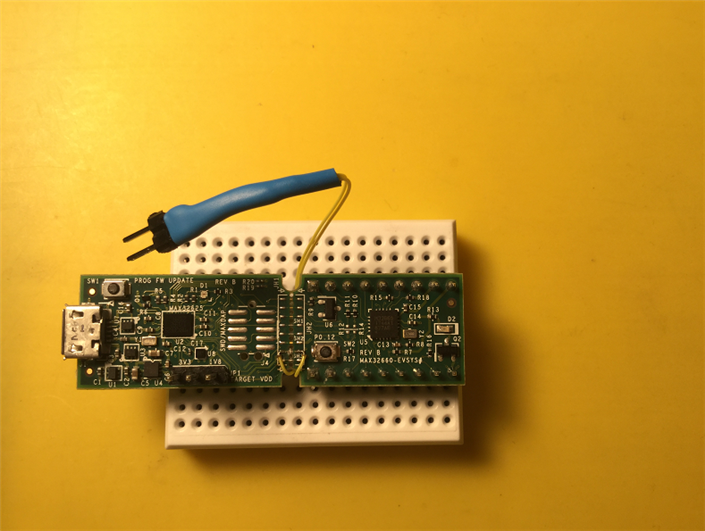I'm road testing the Ultra-Low Power Arm Cortex-M4 Darwin MCU EVM. In this blog post I modify the PCB to isolate the power going to the MAX32660. |
Where to Measure the Current Consumtion
Measuring the voltage is easy. You can do that on the upper right breakout pin.
To measure the current, you could use the TARGET VDD jumper on the debuger / programmer side, and use a low Burden current meter instead of the jumper.
This will work, but there are a few (low current) consumers on the debug circuit.
To rule those out in the power measurements, I chose to get the signal further downstream, where only the controller and peripherals use power.
The way to be able to measure the current is to break the existing PCB trace and replace it by a jumper that can either be shortcut, or where you can insert a current meter.
I soldered a wire on the positive supply line at both sides of the mouse bites in the middle of the PCB.
After checking that all was soldered correctly, I cut the copper trace for the power on the breakout mouse bites in the middle of the board.
Then I soldered pin headers at the end of the two wires, protected by heat shrink.
The two wires are hot glued on the PCB bottom side for strain relief.
When I put a little jumper over the header pins, the board works as before.
When I want to measure current, I can remove the jumper and put a sensitive, low Burden meter in between.
I will use this together with the Low Power example from Maxim. That project can cycle the controller through the different modes by pressing the button on the board.
That is going to be my next blog post ...







Top Comments
-

Jan Cumps
-
Cancel
-
Vote Up
+2
Vote Down
-
-
Sign in to reply
-
More
-
Cancel
-

Jan Cumps
in reply to Jan Cumps
-
Cancel
-
Vote Up
+1
Vote Down
-
-
Sign in to reply
-
More
-
Cancel
Comment-

Jan Cumps
in reply to Jan Cumps
-
Cancel
-
Vote Up
+1
Vote Down
-
-
Sign in to reply
-
More
-
Cancel
Children